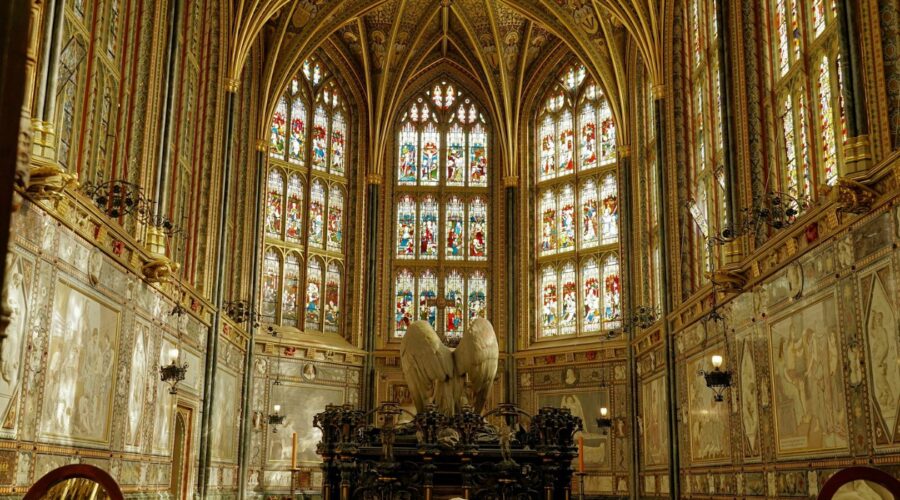Your cart is currently empty!
Unveiling the Sacred Heart of Jesus: A Guide to Its History, Devotion, and Significance

Introduction
The Sacred Heart of Jesus is a revered symbol of Christ’s boundless love and mercy. Its origins lie in the Christian tradition, where it signifies the heart of Jesus Christ as the source of divine grace and compassion.
Historical Origins
Devotional Practices
The devotion to the Sacred Heart emerged in the Middle Ages, influenced by the writings of saints such as Saint Gertrude the Great and Saint Mechtilde of Hackeborn. These saints described visionary experiences that revealed the heart of Jesus as a symbol of his immense love.
Solemnity and Feast Day
In 1675, Pope Clement X established the Feast of the Sacred Heart of Jesus, celebrated annually on the first Friday after the Solemnity of the Most Holy Trinity. This feast became a formal expression of devotion and a testament to the growing popularity of the cult.
Marian Apparitions
In the 19th century, the apparition of Jesus to Saint Margaret Mary Alacoque played a pivotal role in spreading the devotion to the Sacred Heart. During these apparitions, Jesus revealed the 12 promises of the Sacred Heart and emphasized the importance of acts of reparation and consecration.
Theology of the Sacred Heart
Symbol of Divine Love
The Sacred Heart of Jesus is primarily seen as a representation of the immeasurable love of God for humanity. It evokes the concept of a divine heart filled with tenderness, compassion, and forgiveness.
Reconciliation and Salvation
Through his pierced heart, Jesus paid the ultimate price for humanity’s sins. The Sacred Heart symbolizes the reconciliation between God and humanity, offering a path to salvation and eternal life.
Source of Grace and Mercy
Devotion to the Sacred Heart is associated with the belief that Jesus’s heart is a source of divine grace and mercy. It is believed that through prayers, sacrifices, and acts of reparation, devotees can receive blessings and spiritual protection.
Devotional Practices
Reparation and Consecration
Acts of reparation, such as prayer, penance, and suffering, are considered essential in devotion to the Sacred Heart. Consecration, or entrusting oneself to the Sacred Heart, is a profound act of surrender and commitment.
Liturgical Celebrations
The Feast of the Sacred Heart is marked by special liturgical celebrations in Catholic churches, including solemn Masses, processions, and Eucharistic adoration.
Private Devotions
Many devotees engage in personal acts of devotion, such as the daily Consecration to the Sacred Heart, the Nine First Fridays devotion, and the practice of the First Friday Mass.
Impact on Art and Culture
The devotion to the Sacred Heart has influenced countless works of art and literature throughout history. From grand cathedrals adorned with elaborate iconography to humble depictions in homes, the Sacred Heart has become a ubiquitous symbol of Christian faith.
Examples of Devotion
Canonical Consecrations
Numerous nations, dioceses, and religious communities have officially consecrated themselves to the Sacred Heart, recognizing its profound spiritual significance.
National Shrines
Dedicated shrines, such as the Basilica of the Sacred Heart in Paris and the National Shrine of the Sacred Heart in Washington, D.C., serve as centers of pilgrimage and devotion.
Saintly Advocates
Throughout history, saints such as Saint Ignatius of Loyola, Saint Therese of Lisieux, and Saint John Paul II have been fervent promoters of devotion to the Sacred Heart.
Tips for Devotion
* Cultivate a personal relationship with the Sacred Heart through prayer and reflection.
* Engage in acts of reparation and consecration to express your love and gratitude.
* Attend liturgical celebrations and participate in devotions dedicated to the Sacred Heart.
* Surround yourself with reminders of the Sacred Heart, such as images, medals, or rosaries.
* Seek spiritual guidance from priests or other trusted individuals to deepen your understanding and practice of devotion.
Conclusion
The Sacred Heart of Jesus stands as an enduring symbol of divine love, mercy, and salvation. Embracing this devotion offers a profound path to a closer relationship with Christ and a deeper understanding of his immeasurable love for humanity. Through its rich history, theological significance, and devotional practices, the Sacred Heart continues to inspire and guide countless individuals in their spiritual journeys.